- Brain Basics
- What is an Aneurysm?
- What is an AVM?
- What is a Hemorrhagic Stroke?
- Types of Cerebral Aneurysms
- Factors of a Brain Aneurysm
- Symptoms of a Brain Aneurysm
- Dangers of a Brain Aneurysm
- How Does a Brain Aneurysm Develop?
- What Happens When an Aneurysm Bleeds?
- How is a Brain Aneurysm Diagnosed?
Types of Cerebral Aneurysms
A true aneurysm is an expansion of a blood vessel wall involving all layers of the wall. The two most recognized types of true aneurysms are saccular and fusiform, although mycotic, pseudo, and blister represent the rarer types of aneurysms. Most aneurysms occur sporadically, however they can be associated with other medical conditions such as Marfan’s syndrome, fibromuscular dysplasia (FMD), polycystic kidney disease, and Ehlers-Danlos syndrome. In rare instances cerebral aneurysms are a heritable condition that runs in families. Current guidelines recommend screening tests for cerebral aneurysms if two or more first-degree relatives in one family are known to have harbored cerebral aneurysms.

Types of aneurysms (A) saccular, (B) dissecting, (C) mycotic, (D) pseudo and (E) blister
Saccular
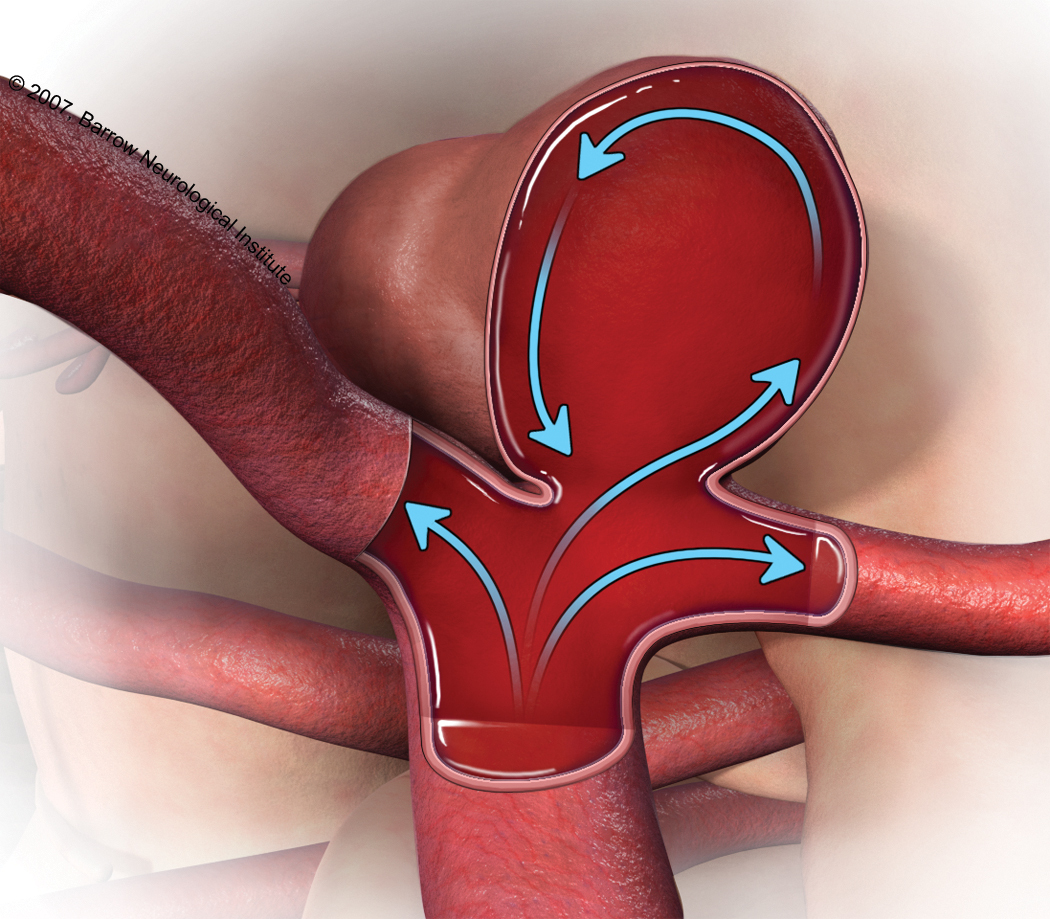
The “saccular” or “berry” aneurysm is the most common type of aneurysm, and it’s the one we refer to when we think of “brain aneurysms” in general. Berry aneurysms are ones that look like sacs or berries sticking out of a side of a blood vessel wall. Most of these have a “neck” region, although sometimes a neck cannot be readily defined in this type of aneurysm, even at the time of surgery. Berry aneurysms are associated with growth and rupture. They are also the most common cause of non-traumatic subarachnoid hemorrhage (SAH), and are attached to the larger portion (dome). Saccular aneurysms develop along weak spots in the arterial wall.
FUSIFORM
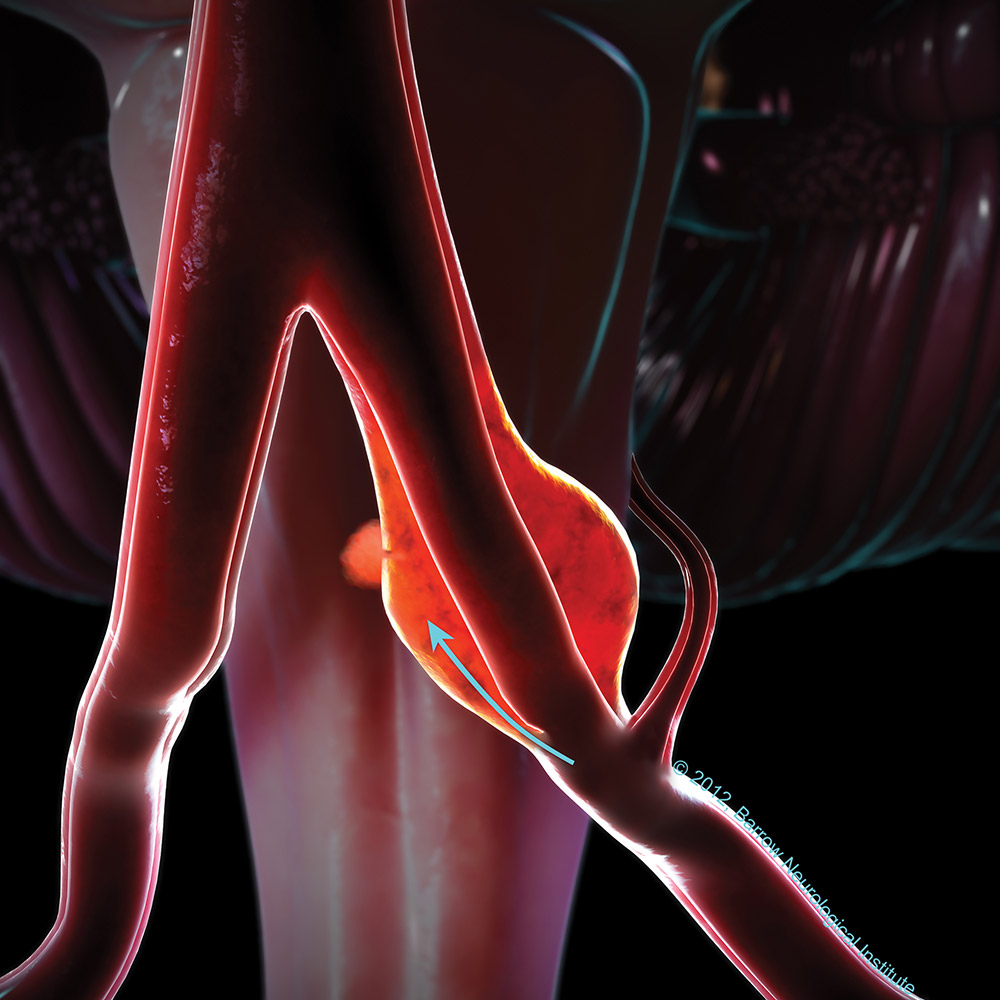
The “fusiform” (dissecting) aneurysm, is less common than the saccular aneurysm and looks like the blood vessel is expanded in all directions. Dissecting aneurysms form from injuries to the innermost layers of the blood vessel, such as after a traumatic injury or from the formation of atherosclerotic (fatty) plaque. Fusiform aneurysms don’t have a “neck” region, and they seldom rupture. They rarely present with SAH but can cause strokes and, when they grow in size, can become symptomatic.
MYCOTIC
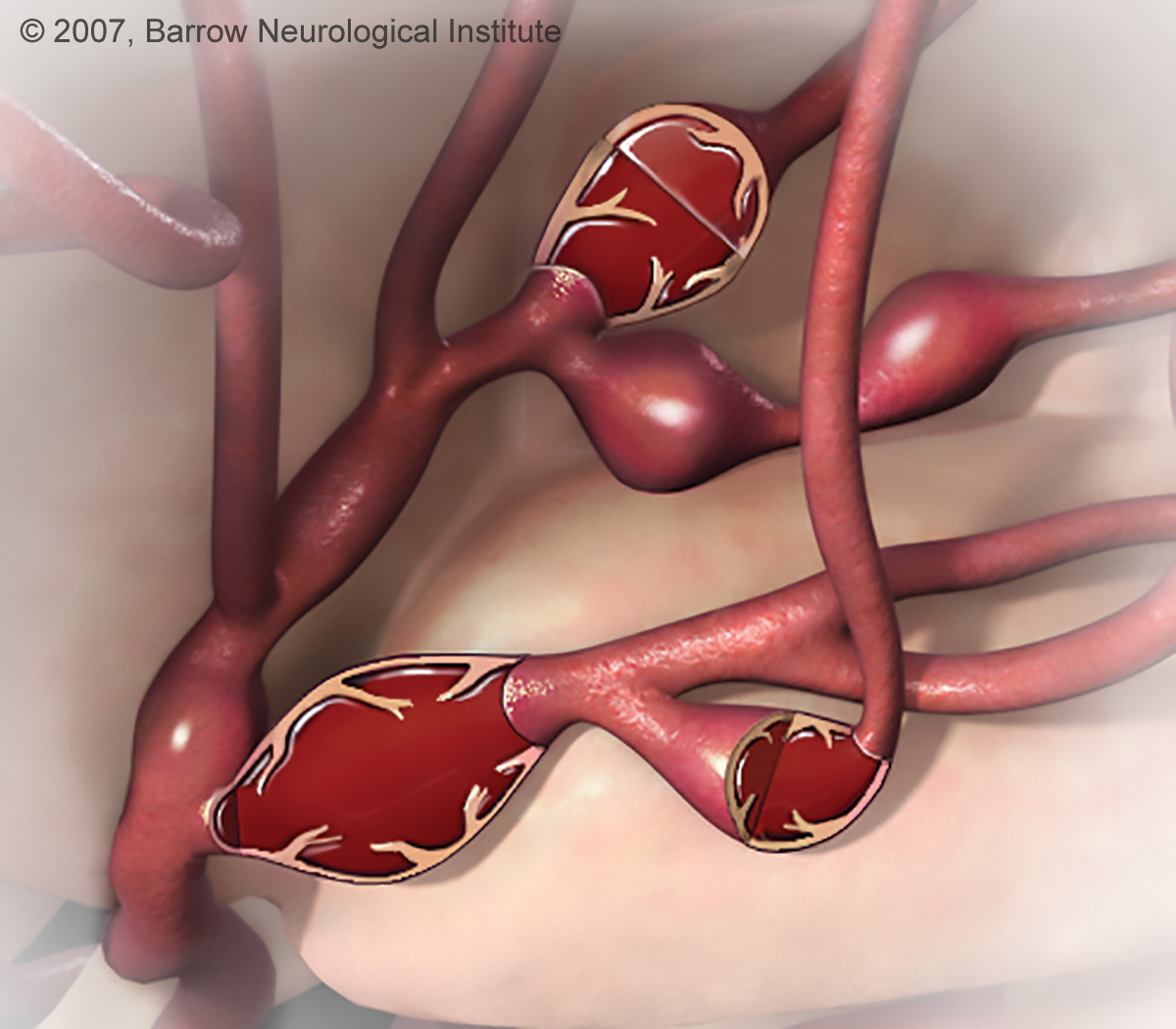
The “mycotic” or “infectious” aneurysm is very rare and is a saccular aneurysm that arises from an artery that has had a certain part of the wall affected by a source of infection usually originating from somewhere else in the body (e.g., the heart) and spreading to the brain blood vessel by the blood stream. Mycotic aneurysms are caused by infectious agents, often in association with subacute bacterial endocarditis. Multiple mycotic aneurysms, found along the distal (superficial) portions of the brain arteries, are common.
PSEUDO (DISSECTING)
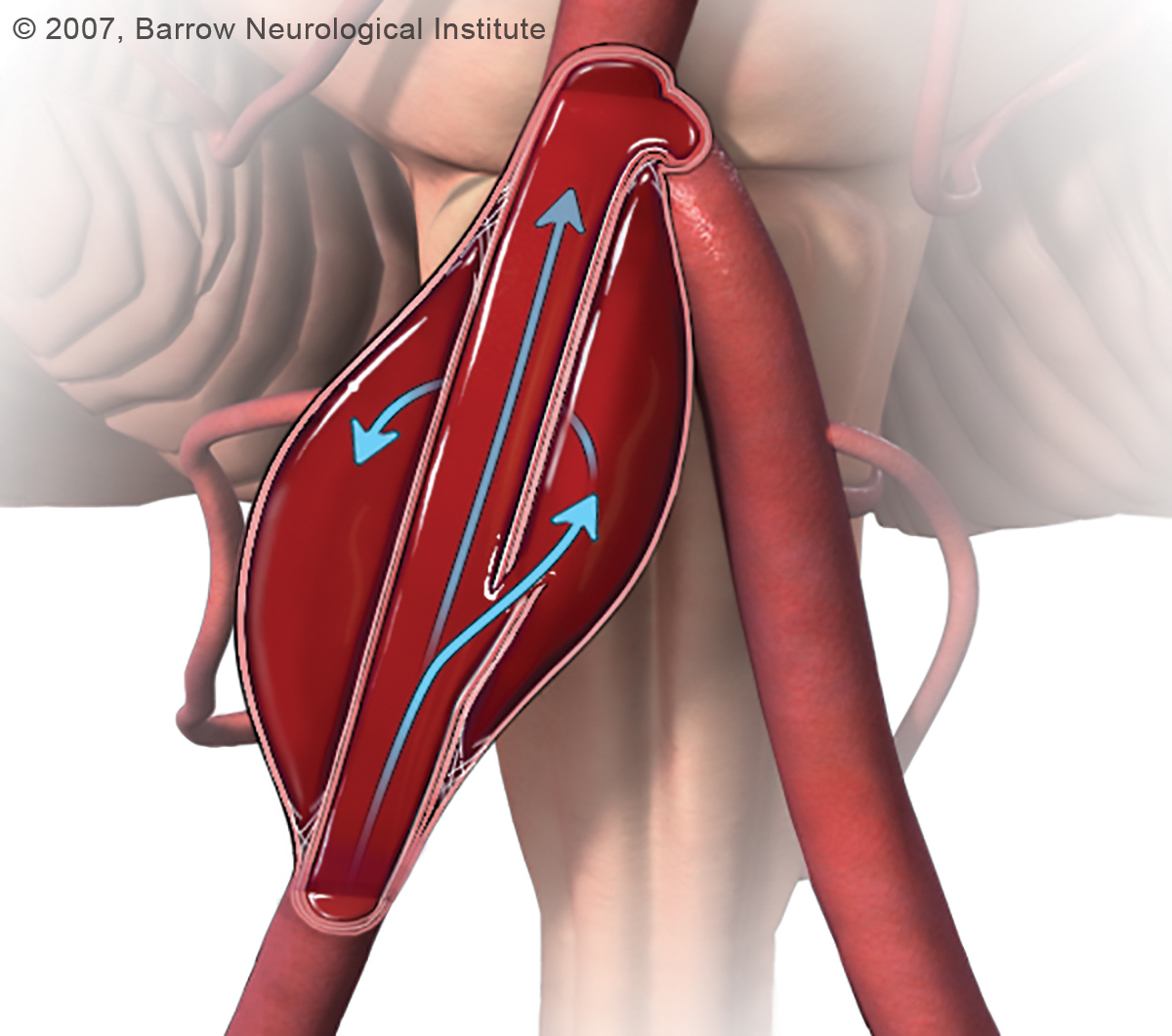
A false or “pseudo-aneurysm” brain aneurysm is an expansion of a blood vessel wall that does not involve all layers of the wall. Most commonly, it involves the outermost layers of the brain artery only, and usually follows injury or tearing of the vessel wall (referred to as a “dissection” or “laceration”). Pseudoaneurysms usually form in the regions where the falx or tentorium is near cerebral arteries. Ballooning may occur on one side of the artery wall, or it may block off or obstruct blood flow through the artery. Dissecting aneurysms usually occur from traumatic injury but can also form spontaneously. Treatment is determined by the shape and location of the aneurysm.
BLISTER
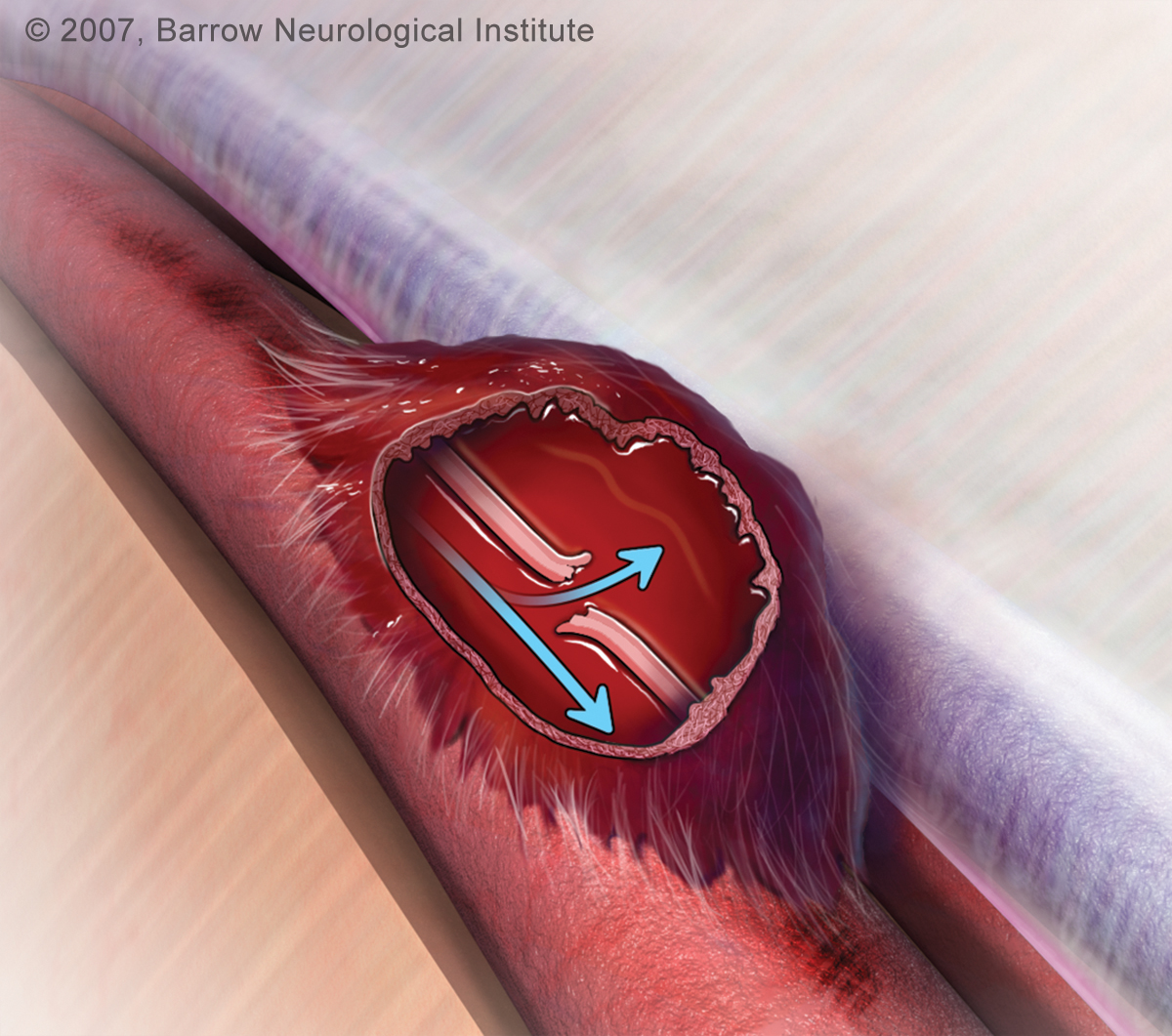
Blister aneurysms can occur anywhere on the brain blood vessels but most commonly form on the internal carotid artery and have a blister-like appearance on the vessel. These aneurysms may have an increased incidence of bleeding and higher mortality rate.
Common Questions
Upcoming Events
News Room
Connect with Us
- Subscribe to our Knuckle-Up Newsletter
- Become a Fan on Facebook
- Follow us on Twitter
- Follow us on Instagram
- Join our Online Aneurysm/AVM Support Group
- Join our Online Parents Support Group
- Join our Online Young Adult Survivor’s Support Group
- Join our Online Aneurysm/AVM Caregivers Support Group
- Join our Online Honoring the Taken Support Group
- Support Group Locations
